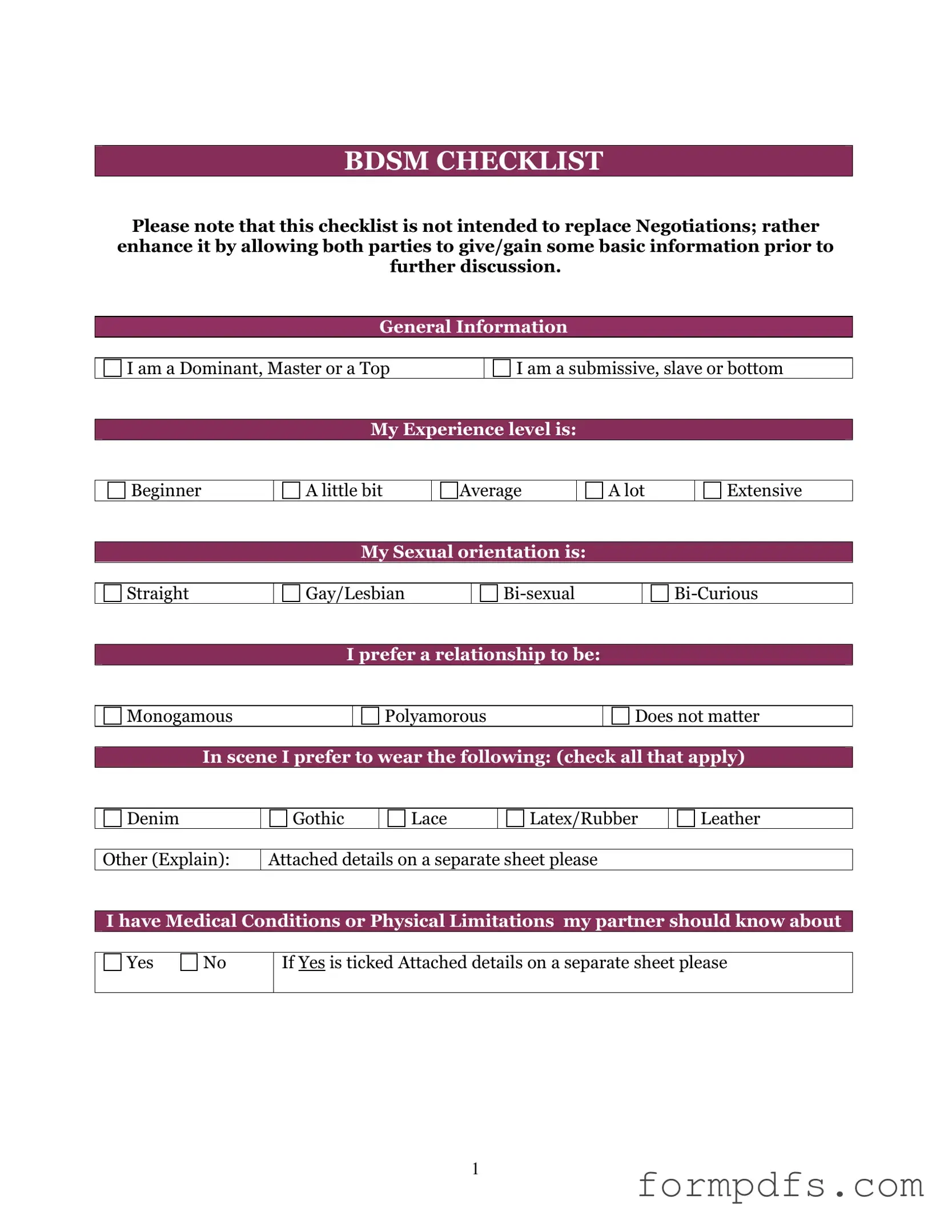What is the BDSM Checklist form?
The BDSM Checklist form is a tool designed to help individuals and couples explore their interests and boundaries within BDSM practices. It allows users to identify specific activities they are interested in, as well as those they wish to avoid. This form serves as a conversation starter, promoting communication and understanding between partners about their desires and limits.
How do I use the BDSM Checklist form?
To use the BDSM Checklist form, individuals should first review the list of activities included. Each person should mark their level of interest for each activity, typically using a scale that ranges from "not interested" to "very interested." After completing the checklist, partners can discuss their responses, ensuring they understand each other's preferences and boundaries. This dialogue is crucial for establishing a safe and consensual environment.
Is the BDSM Checklist form only for couples?
No, the BDSM Checklist form can be used by anyone interested in BDSM, whether they are in a couple, part of a polyamorous relationship, or exploring solo. It is a valuable resource for individuals to clarify their own desires and boundaries, which can be shared with potential partners or used for personal reflection.
Why is communication important when using the BDSM Checklist?
Communication is vital in BDSM because it ensures that all parties involved have a clear understanding of each other's limits and desires. The BDSM Checklist serves as a foundation for these discussions, helping to prevent misunderstandings and promote safety. Open dialogue fosters trust and respect, which are essential for a positive BDSM experience.
Can the BDSM Checklist form be modified?
What should I do if my partner and I have differing interests on the checklist?
Having differing interests on the BDSM Checklist is common and should be approached with openness and respect. Discuss the reasons behind each person's preferences and explore possible compromises. It's essential to prioritize consent and comfort for both partners. If certain activities are not mutually agreeable, consider exploring alternative options that satisfy both individuals.
